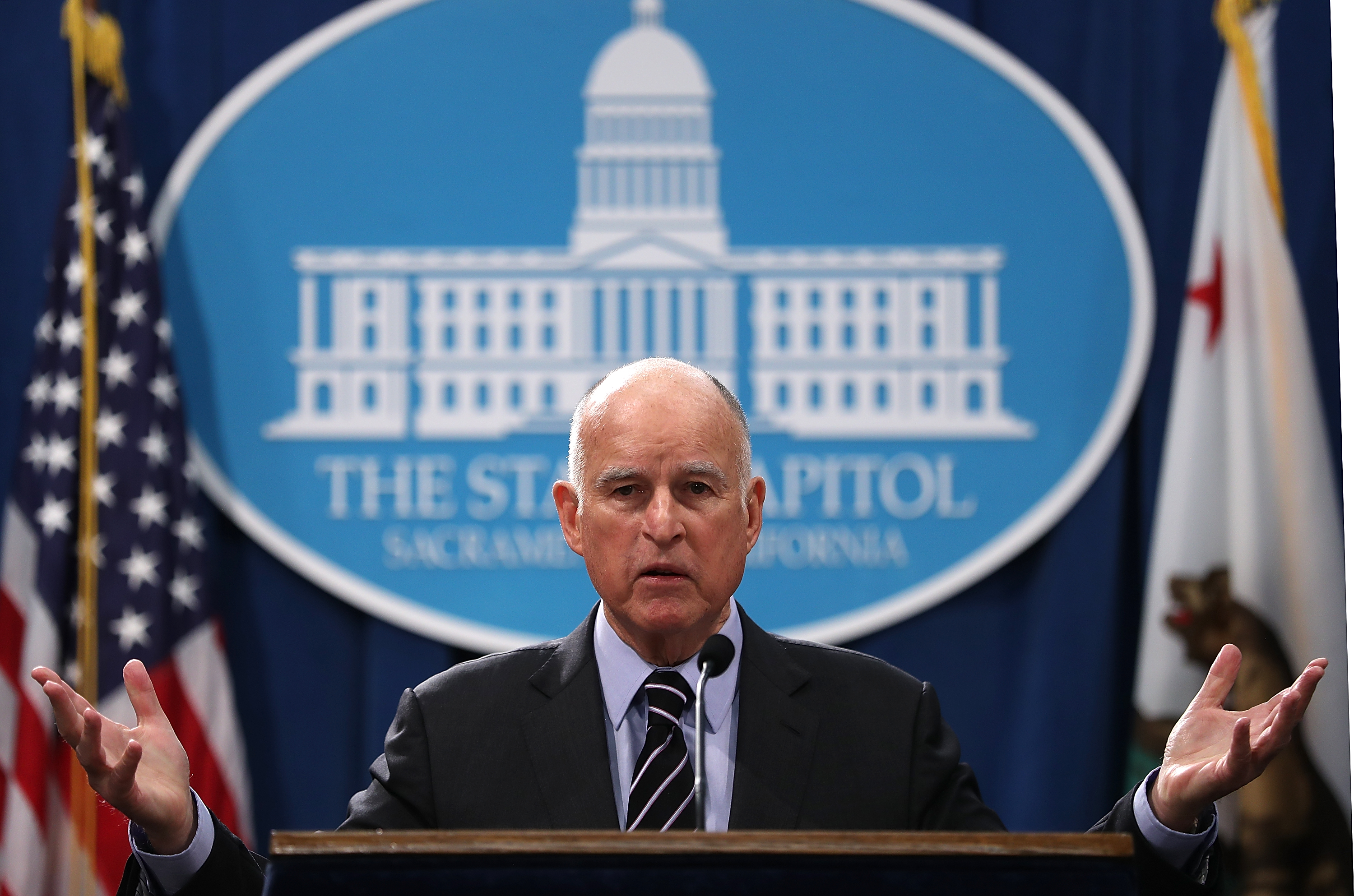California's looming single-payer disaster
Advocates of government-provided universal health care must confront financial reality


Progressives advocating single-payer health care need to face financial reality.
Vermont had to abandon its attempts to impose a single-payer health-care system when its greatest champion, Gov. Peter Shumlin, discovered that it would cost far more than he had anticipated. Similarly, last year Colorado voters resoundingly rejected ColoradoCare when a study discovered that even tripling taxes wouldn't be enough to keep up with the costs.
Now it's California's turn.
The Week
Escape your echo chamber. Get the facts behind the news, plus analysis from multiple perspectives.

Sign up for The Week's Free Newsletters
From our morning news briefing to a weekly Good News Newsletter, get the best of The Week delivered directly to your inbox.
From our morning news briefing to a weekly Good News Newsletter, get the best of The Week delivered directly to your inbox.
The Golden State's legislature has plowed ahead with a plan to impose single-payer care. But a new analysis from the state Senate on SB562 shows that the annual costs of such a system would exceed the state's current annual budget — even if federal funding continued at the same pace. "California would have to find an additional $200 billion per year, including in new tax revenues, to create a so-called 'single-payer' system," the Sacramento Bee reported after the publication of a report by the Senate Appropriations committee. Even that estimate assumes the state would retain the existing $200 billion in local, state, and federal funding it currently receives to offset half of a $400 billion total price tag.
$400 billion a year. That's 223 percent of California's total annual expenditures in an already bloated budget.
Let's put it another way: California could build four high-speed rail systems between San Francisco and Los Angeles every year for the same amount of money. (Assuming, of course, that the state ever manages to build the one in progress now, which is also being funded in large part by people who live outside of California.)
But wait! Can't they just use the money California employers pay now for health care by transferring those funds to the state in taxes? Theoretically yes — but it's still not enough. According to the Bee's report of the Senate analysis, "Employers currently spend between $100 billion to $150 billion per year, which could be available to help offset total costs. To get that cash into the California system, the state would have to impose new taxes to seize those funds — and even then, California's new health-care system would still come up short by between $50 billion to $100 billion every year."
A free daily email with the biggest news stories of the day – and the best features from TheWeek.com
As both Colorado and Vermont discovered, the prospects inevitably get worse from there. An analysis from the Colorado Health Institute showed that their state's ColoradoCare proposal would start off with a deficit of over $200 million in its very first year of full operation, even with a three-year headstart on new taxes to launch the system. By the end of the tenth year, the cumulative red ink would have exceeded $7 billion — which would be more than twice the state's annual GDP.
The solutions for this fiscal meltdown in a single-payer system, CHI noted, were all unpleasant. One option would be to cut benefits of the universal coverage, and hiking co-pays to provide disincentives for using health care. That would in some cases "reduce the level of insurance below what [Coloradans] have today," the study noted. The state could raise taxes for the health-care system as deficits increased, which would amount to ironic premium hikes from a system designed to be a response to premium hikes from insurers. Another option: Reduce the payments provided to doctors, clinics, and hospitals for their services, which would almost certainly drive providers to either reduce their access or leave the state for greener pastures.
Those are the only options available in closed systems. Our experiences with other state-run single-payer systems in the U.S. only reinforce the conclusions reached by CHI. Medicare and Medicaid have attempted to restrict provider payments while expanding their enrollments, and as a result providers have greatly reduced their access to new patients from both systems. The Veterans Administration has wait times for its clinics that stretch out so long as to have resulted in patient deaths, along with rampant corruption to hide failures and protect the bureaucrats at the expense of the patients. The Indian Health Service, which provides care to those on reservations, has such crises of funding that Native Americans stuck in the system joke about not getting sick after June.
When faced with the realities of single-payer systems, Colorado voters took the rational choice and overwhelmingly rejected it. California taxpayers had better hope that their elected officials make the same decision, but in this case, the third time might be the charm ... for disaster.
Edward Morrissey has been writing about politics since 2003 in his blog, Captain's Quarters, and now writes for HotAir.com. His columns have appeared in the Washington Post, the New York Post, The New York Sun, the Washington Times, and other newspapers. Morrissey has a daily Internet talk show on politics and culture at Hot Air. Since 2004, Morrissey has had a weekend talk radio show in the Minneapolis/St. Paul area and often fills in as a guest on Salem Radio Network's nationally-syndicated shows. He lives in the Twin Cities area of Minnesota with his wife, son and daughter-in-law, and his two granddaughters. Morrissey's new book, GOING RED, will be published by Crown Forum on April 5, 2016.
-
 Political cartoons for January 19
Political cartoons for January 19Cartoons Monday's political cartoons include Greenland tariffs, fighting the Fed, and more
-
 Spain’s deadly high-speed train crash
Spain’s deadly high-speed train crashThe Explainer The country experienced its worst rail accident since 2013, with the death toll of 39 ‘not yet final’
-
 Can Starmer continue to walk the Trump tightrope?
Can Starmer continue to walk the Trump tightrope?Today's Big Question PM condemns US tariff threat but is less confrontational than some European allies
-
 The billionaires’ wealth tax: a catastrophe for California?
The billionaires’ wealth tax: a catastrophe for California?Talking Point Peter Thiel and Larry Page preparing to change state residency
-
 Bari Weiss’ ‘60 Minutes’ scandal is about more than one report
Bari Weiss’ ‘60 Minutes’ scandal is about more than one reportIN THE SPOTLIGHT By blocking an approved segment on a controversial prison holding US deportees in El Salvador, the editor-in-chief of CBS News has become the main story
-
 Has Zohran Mamdani shown the Democrats how to win again?
Has Zohran Mamdani shown the Democrats how to win again?Today’s Big Question New York City mayoral election touted as victory for left-wing populists but moderate centrist wins elsewhere present more complex path for Democratic Party
-
 Millions turn out for anti-Trump ‘No Kings’ rallies
Millions turn out for anti-Trump ‘No Kings’ ralliesSpeed Read An estimated 7 million people participated, 2 million more than at the first ‘No Kings’ protest in June
-
 Ghislaine Maxwell: angling for a Trump pardon
Ghislaine Maxwell: angling for a Trump pardonTalking Point Convicted sex trafficker's testimony could shed new light on president's links to Jeffrey Epstein
-
 The last words and final moments of 40 presidents
The last words and final moments of 40 presidentsThe Explainer Some are eloquent quotes worthy of the holders of the highest office in the nation, and others... aren't
-
 The JFK files: the truth at last?
The JFK files: the truth at last?In The Spotlight More than 64,000 previously classified documents relating the 1963 assassination of John F. Kennedy have been released by the Trump administration
-
 'Seriously, not literally': how should the world take Donald Trump?
'Seriously, not literally': how should the world take Donald Trump?Today's big question White House rhetoric and reality look likely to become increasingly blurred
